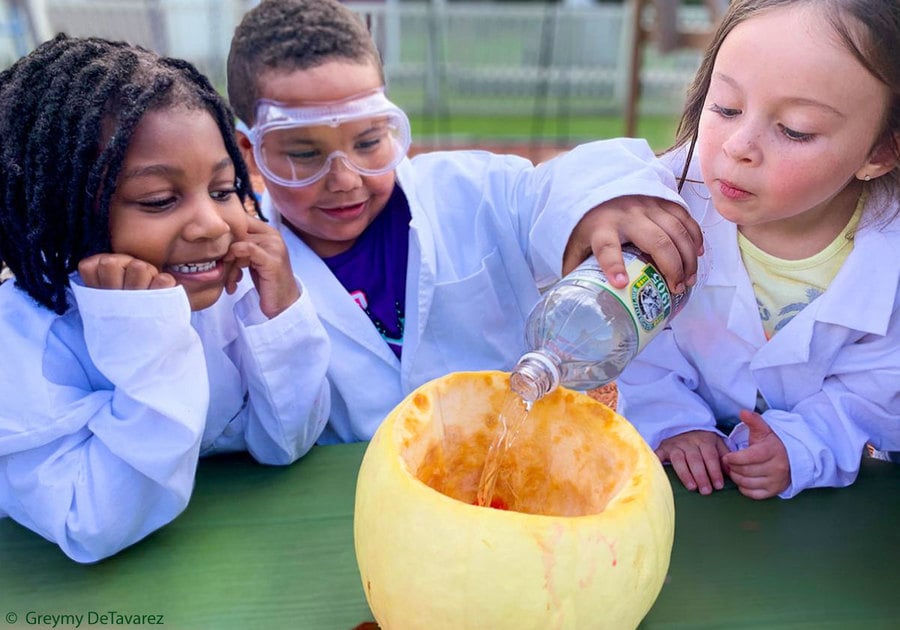Imagine walking in to an empty room with bare white walls and hard floors then being told, have fun! What's the first thing that would come out of your mouth? Maybe, "What am I supposed to do?" or "How am I going to have fun when there is nothing in here?" These are things that kids express sometimes in words, other times in fits, or maybe even aggression. Creating an exciting and engaging environment that sparks creativity, imagination and room to ask questions and explore is extremely important for growth in children. A lot of times we tend to put our expectations of what we think the children should be learning at their age. When really we should be honing in on what the children are capable of and how to take it a step further. Here are a few things that we as care takers, parents, and any other person of influence in these little humans lives can do to create a place of discovery and wonder.
- Engage them with their eyes. Just as you would look out to a field of never ending flowers thinking how beautiful they are then start having crazy thoughts like "I wonder how many I could fit into my car." Give them room to be creative, let their little eyes grow so big when walking into the room of what you planned for the day that you can see their brains doing backflips in excitement.
- Engage them with their ears. Give examples of what the kids could do with the materials to create different sounds that spark questions. Banging rocks up against each other, pouring colored rice from one container to another, encourage them to discover existing sounds and create new ones!
- Engage them with their noses. Bring in flowers, herbs or essential oils for mixing scents into play. It also opens conversation when you react with questions to faces made when the kids particularly do not like what they just smelt.
- Engage them with taste. A rainbow of fruit on a table opens so many doors to talk about how fruits of the same color can taste different and look different etc. . .
- Engage them with touch. Have them dip their toes in paint and make feet pictures. Let them squeeze, poke, flatten, and mold clay to create whatever it is they want. Then encourage them to use loose parts to add more detail to what they are describing.
Creating an engaging environment isn't just about a safe place to play. It's about the tools given and how you use them to give each child the potential to grow up discovering the world we live in!



